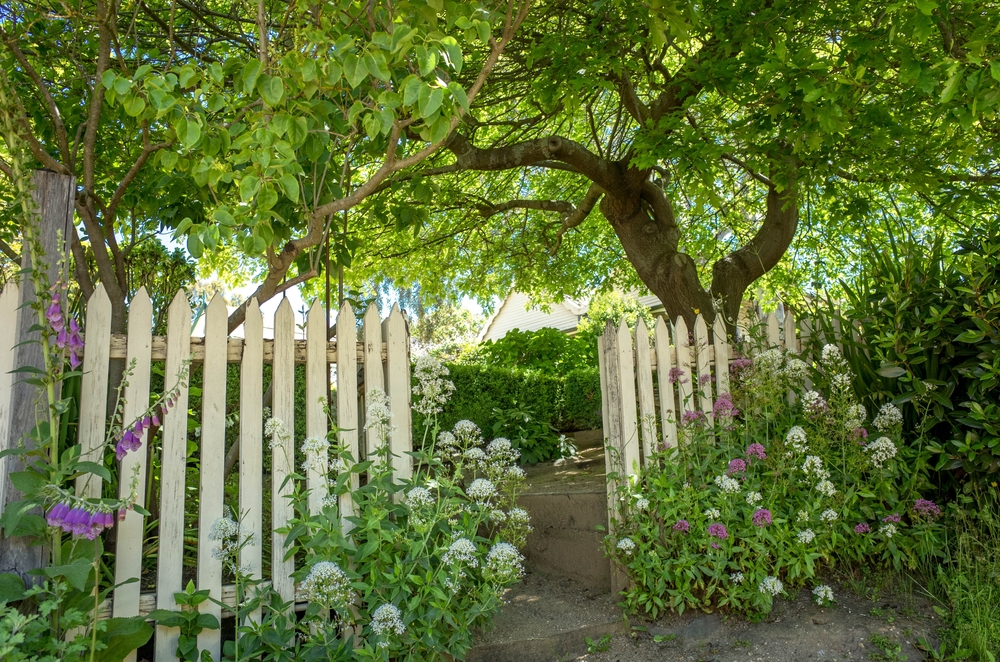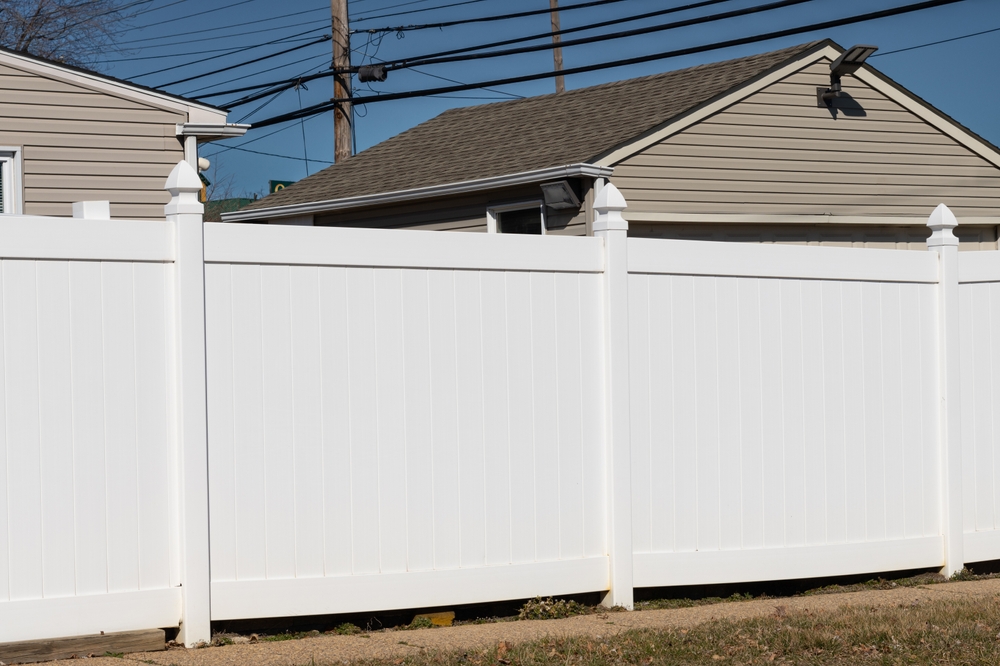Vinyl fences, especially white vinyl fences, can sometimes develop a yellowish tint over time due to various environmental factors. While vinyl is known for its durability and resistance to many forms of damage, it is not entirely immune to discoloration. Here are some common reasons why vinyl fences may turn yellow:
- Sunlight Exposure: Prolonged exposure to direct sunlight, particularly in regions with intense and frequent sunlight, can cause white vinyl fences to yellow over time. This discoloration is often the result of UV (ultraviolet) radiation, which can break down the chemical compounds in the vinyl material.
- Environmental Contaminants: Air pollution, pollen, dust, and other environmental contaminants can accumulate on the surface of the fence. Over time, these contaminants can contribute to yellowing, especially in areas with higher levels of pollution.
- Algae and Mold Growth: In areas with high humidity and moisture, white vinyl fences may develop algae or mold growth. Algae and mold can create a greenish or yellowish tint on the surface of the fence.
- Inadequate Cleaning: Infrequent or improper cleaning of the fence can allow dirt, grime, and contaminants to accumulate, which can lead to discoloration over time.
- Chemical Exposure: Exposure to certain chemicals or cleaning agents, especially those that contain harsh solvents or bleach, can cause damage and discoloration to vinyl fences.
To prevent or address the yellowing of a vinyl fence:
- Regular Cleaning: Clean the fence regularly with a mixture of mild detergent (such as dish soap) and water. Gently scrub with a soft brush or cloth, and rinse thoroughly with a garden hose.
- UV-Resistant Vinyl: Consider using vinyl fence materials that have built-in UV protection. These materials are designed to resist fading and discoloration caused by sunlight exposure.
- Shade and Cover: If possible, provide shade or cover for the fence, especially during the hottest parts of the day. This can help reduce the intensity of UV exposure.
- Algae and Mold Prevention: In humid environments, take steps to prevent algae and mold growth by keeping the fence clean and ensuring proper ventilation.
- Avoid Harsh Cleaners: Do not use abrasive or harsh cleaning chemicals on the fence. Stick to mild detergents and follow the manufacturer’s cleaning guidelines.
If your white vinyl fence has already turned yellow, you may be able to restore its original color with specialized vinyl cleaning products or treatments designed to remove discoloration. Consult with the manufacturer or a professional for guidance on the best approach for your specific fence and situation.


